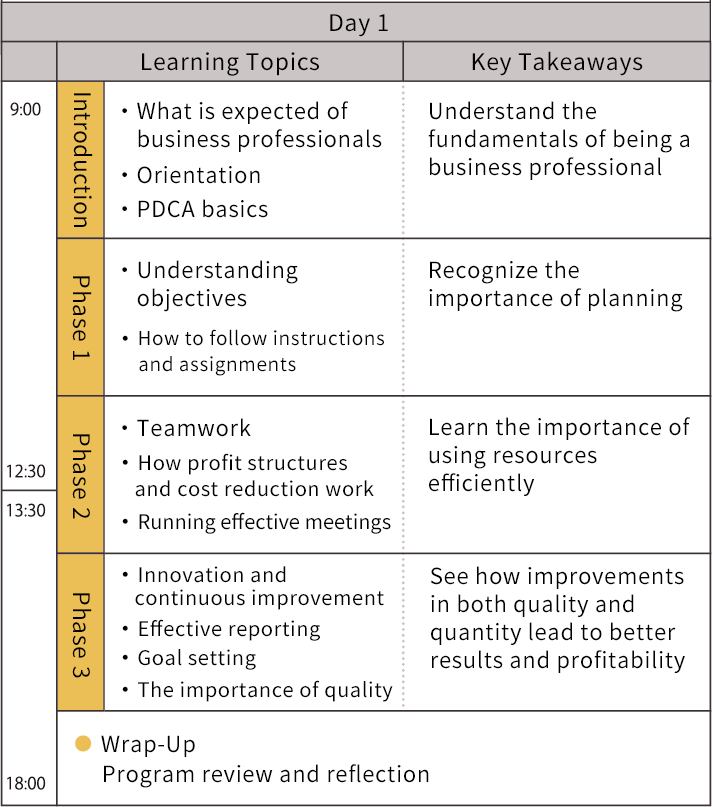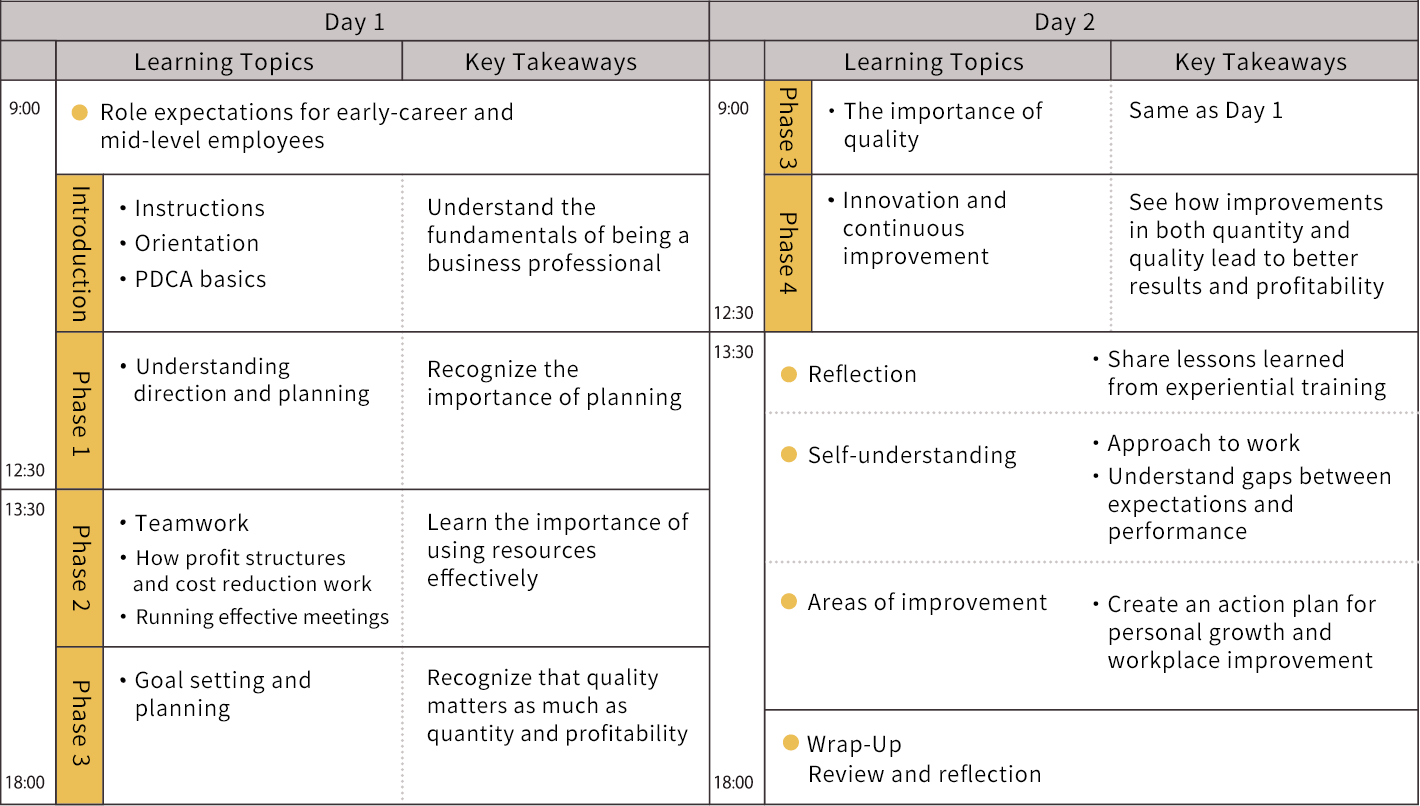Experiential Training Program for New Employees
SHIGOTO
SHIGOTO is an experiential learning program that helps new employees gain a solid foundation in the fundamentals of work. Through hands-on experience, reflection, and practice, participants build the core behaviors required to succeed as business professionals.
Core Behaviors Developed in SHIGOTO
- Goal Alignment
… Working with a clear understanding of objectives and priorities - Execution & Reporting
… Following instructions reliably and providing timely updates - Applying PDCA
… Using Plan–Do–Check–Act to move work forward effectively - Teamwork
… Contributing to team efforts and building cooperative relationships - Cost & Profit
… Making decisions with cost, profit, and efficiency in mind - Quality & Lead Time
… Delivering results that meet standards and deadlines - Improvement (Kaizen) & Creativity
… Approaching work proactively and seeking better ways to create value
Key Features
-
POINT
Engages participants through experiential learning that drives active involvement.
-
POINT
Cumulative learning that builds on each phase.
-
POINT
Develops the knowledge, skills, and mindset professionals need.
-
POINT
Flexible formats, from half-day to two-day courses.
-
POINT
Can be applied broadly, from new employee onboarding to supervisor development.
─ Training Flow ─
Participants form groups of four and create a mock company within each group. As they work through the PDCA (Plan–Do–Check–Act), they complete three to four phases of activities, producing a triangular model as part of the process.
Each phase builds on the last, giving participants repeated opportunities to practice and internalize the core behaviors. The program concludes with group or individual presentations, followed by a wrap-up from the instructor.
─ Standard Curriculum ─
For Interns and New Employees
Understand the fundamentals of being a business professional

─ Four-Phase Curriculum ─
For Early-Career and Mid-Level Employees
-
Build foundational capabilities by clarifying role expectations, fostering a stronger sense of purpose, and ensuring reliable execution of work.
-
Gain insight into personal work behaviors through simulated job experiences.
-
Reconfirm effective and efficient ways of working while identifying areas for improvement.

─ Use Cases ─
Case 1: Early Onboarding
- A chance to put business etiquette and introductory training into practice.
- Simulated work shows the difference between “knowing” and “doing,” reinforcing the importance of applying basic behaviors.
E.g., Day 1: Company orientation, Day 2: Business etiquette, Day 3: SHIGOTO
Case 2: Capstone for Onboarding
- Reviews the basic behaviors learned early in onboarding.
- Reinforces their importance to ensure a smooth transition into job duties.
E.g., On the final day of a multi-month onboarding program
Case 3: New Employee Follow-Up
- Revisits the basics once employees are used to daily work.
- Encourages reflection and helps employees build the trust expected of professionals inside and outside the company.
E.g., Six months to one year after joining the company
Case 4: Peer Learning Through Junior Instructors
- By assigning younger employees as instructors, the program strengthens their awareness while also creating opportunities to build relationships with new hires.
──Mutual reinforcement──
Junior EmployeesDeepen their own understanding of core behaviors by teaching them to others.
New Hires More easily envision their own future goals, seeing role models close in age and position.
E.g., Assigning on-the-job trainers as instructors.
① Instructor training for on-the-job trainers
(Learn to understand the trainer’s role and how to facilitate SHIGOTO, including key methods and points.)
② On-the-job trainers act as instructors and carry out the SHIGOTO program for new employees.
